Table of Contents
THE BUTTERWORTH-HEINEMANN HOMELAND SECURITY SERIES
Other Titles in the Series:
Maritime Security (2008)
ISBN: 978-0-12-370859-5
Michael McNicholas
Introduction to Emergency Management, Third Edition (2008)
ISBN: 978-0-7506-8514-6
George Haddow et al.
Terrorism and Homeland Security: An Introduction with Applications (2007)
ISBN: 978-0-7506-7843-8
Philip P. Purpura
Introduction to Homeland Security, Second Edition (2006)
ISBN: 0-7506-7992-1
Jane Bullock et al.
Emergency Response Planning for Corporate and Municipal Managers,
Second Edition (2006)
ISBN: 0-12-370503-7
Paul Erickson
Other Related Titles of Interest:
Introduction to Security, Eighth Edition (2008)
ISBN: 978-0-7506-8432-3
Robert J. Fischer, Edward P. Halibozek, and Gion Green
The Corporate Security Professionals Handbook on Terrorism (2008)
ISBN: 0-7506-8257-4
Edward P. Halibozek et al.
The Design and Evaluation of Physical Protection Systems, Second Edition (2008)
ISBN: 0-7506-8352-X
Mary Lynn Garcia
Vulnerability Assessment of Physical Protection Systems (2006)
ISBN: 0-7506-7788-0
Mary Lynn Garcia
Introduction to International Disaster Management (2006)
ISBN: 0-7506-7982-4
Damon Coppola
Risk Analysis and the Security Survey, Third Edition (2006)
ISBN: 0-7506-7922-0
James Broder
High-Rise Security and Fire Life Safety, Second Edition (2003)
ISBN: 0-7506-7455-5
Geoff Craighead
Investigative Data Mining for Security and Criminal Detection (2002)
ISBN: 0-7506-7613-2
Jesus Mena
Visit http://books.elsevier.com/security for more information on these titles and other resources.
Acquisitions Editor: Pamela Chester
Marketing Manager: Marissa Hederson
Project Manager: Jeff Freeland
Cover Design: Joanne Blank
Compositor: SPi Technologies India Pvt. Ltd.
Cover Printer: Phoenix Color Corp.
Text Printer/Binder: Sheridan Books
Butterworth-Heinemann is an imprint of Elsevier
30 Corporate Drive, Suite 400, Burlington, MA 01803, USA
Linacre House, Jordan Hill, Oxford OX2 8DP, UK
Copyright 2008, Elsevier Inc. All rights reserved.
Exception: Cover image copyright iStockphoto.
No part of this publication may be reproduced, stored in a retrieval system, or transmitted in any form or by any means, electronic, mechanical, photocopying, recording, or otherwise, without the prior written permission of the publisher.
Permissions may be sought directly from Elseviers Science & Technology Rights
Department in Oxford, UK: phone: (+44) 1865 843830, fax: (+44) 1865 853333,
E-mail: permissions@elsevier.com. You may also complete your request online
via the Elsevier homepage (http://elsevier.com), by selecting Support & Contact
then Copyright and Permission and then Obtaining Permissions.

Recognizing the importance of preserving what has been written, Elsevier prints its books on acid-free paper whenever possible.
Library of Congress Cataloging-in-Publication Data
Application submitted.
British Library Cataloguing-in-Publication Data
A catalogue record for this book is available from the British Library.
ISBN: 978-0-7506-8489-7
For information on all Butterworth-Heinemann publications visit our Web site at www.books.elsevier.com
Printed in the United States of America 08 09 10 11 12 9 8 7 6 5 4 3 2 1
Foreword
The future aint what it used to be.
Twenty-five years ago, when Yogi Berra uttered his famous oxymoron, few of us could have realized how very prescient those words were. At the time, our major concerns for security were nuclear, and our biggest fears stemmed from state-sponsored full-scale nuclear warfare. Governments as well as private citizens scrambled to create security through construction of fallout shelters, nuclear drills, stockpiling of food, and wholesale investment in the Cold War. Infectious agents were not even on the radar screen, and terrorism was something that happened only in other countries.
Today, our approach to hazards protection is quite different, and we recognize a broad spectrum of threats, not only nuclear, but also chemical, explosive, radiologic, and biologic. We need comprehensive and flexible packages to cover all. This book is designed to address the significant and wide-ranging threats posed by the biological agentsunderstanding the diverse nature of the biological threats that exist and promoting effective responses appropriate to each incursion.
Regarding biological security, we are faced with twin threats: a devastating event due to biological terrorism and the development of a pandemic due to Mother Nature. Biosecurity and biodefense are critical in preparing us for protection for either an intentional or an incidental event.
Terrorism is a form of asymmetric warfare, designed to undermine economic, social, environmental, or political values. Targets and delivery mechanisms are highly variable, so preventive measures as well as control plans need to be flexible and comprehensive. In the case of biologic terrorism, targets are living organisms: humans, animals, or plants. Bioterror is aimed at humans and, as such, is capable of causing, if not mass morbidity or mortality, then mass hysteria, thereby undermining the whole fabric of society. This could be through dissemination of a disease agent that passes from person to person, or it could be through contamination of the food supply, causing illness through consumption of tainted food. But asymmetric threats may also be directed at agricultural animals or plants, with the purpose being to create economic devastation of the animal or crop industries that would initiate a cascade of negative events through multiple sectors of the economy.
In addition, the steady parade of emerging diseases, such as SARS or bird flu, has shown undeniably that destabilization and economic havoc can be wreaked by an emerging disease as well. These emerging diseases are spawned by globalization and the ever-expanding human population, allowing for possibilities for agents to move from comfortable domains into new unexplored niches. There have been tremendous increases in international trade and trafficking of people, animals, and animal products, all with potential for bringing animal, human, or plant diseases to new locations. The increasingly complex international transportation network can neither be predicted nor paused, creating well-founded concerns about emergence and incursion of diseases and subsequent public health or economic consequences. As articulated in several recent publications, we are creating the microbial equivalent of a perfect storm. A human pandemic that emerges would be rapidly spread all over the globe. An agricultural epidemic could also have very severe consequences: production of sufficient food to feed the growing human population makes it imperative that we protect agriculture from emerging threats.
The key rule in limiting the damage caused by a biological eventwhether it is bioterror, agroterror, or an emerging diseaseis this: The amount of economic damage or human illness depends directly on how quickly the disease or contaminated food is detected and contained. If the first instance is recognized and adequate control measures implemented immediately, we will likely circumvent severe economic consequences and human illness. However, if the problem is not initially recognized and is allowed to spread to any extent, we will face dire consequences in our public or agricultural health. Our best defense against this serious damage is to increase awareness to a point where such an emergence or incursion is detected as early as possible and that effective local, state, and federal response capabilities are developed so that deleterious spread can be efficiently intercepted through rapid and appropriate actions.

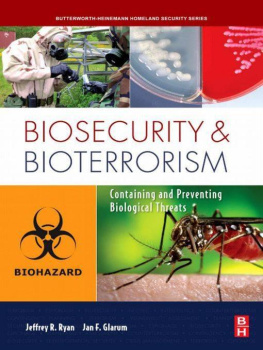
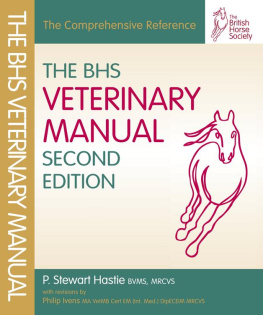
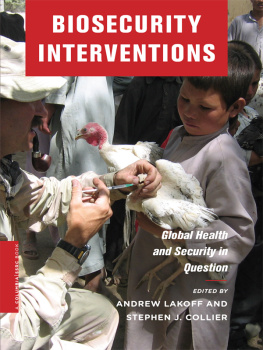

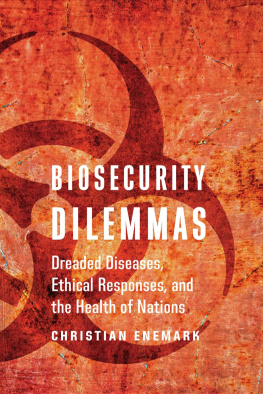
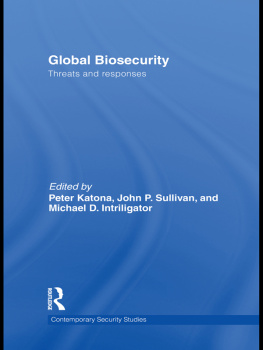



 Recognizing the importance of preserving what has been written, Elsevier prints its books on acid-free paper whenever possible.
Recognizing the importance of preserving what has been written, Elsevier prints its books on acid-free paper whenever possible.